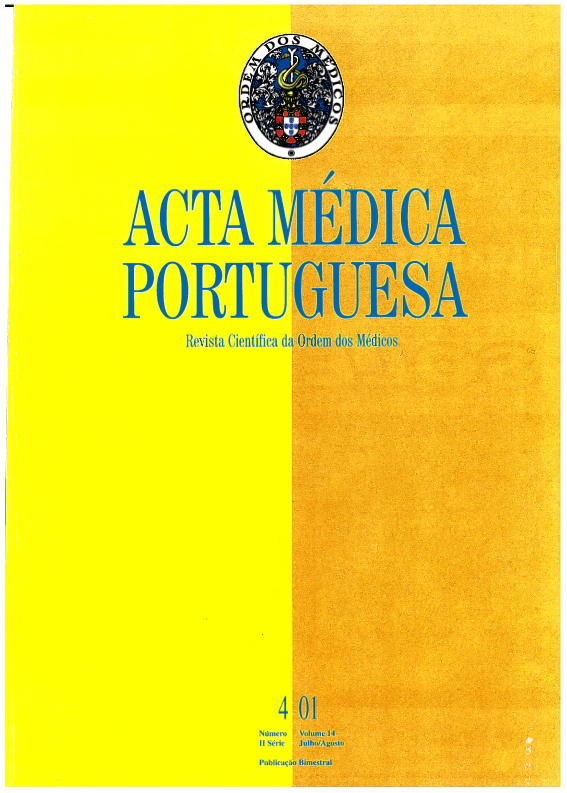Glicosilação avançada na diabetes mellitus. Génese das complicações tardias.
DOI:
https://doi.org/10.20344/amp.1862Resumo
Chronic hyperglycaemia contributes to tissue and organ damage retina, kidney and nerves by promoting the formation of advanced glycosylation end products (AGE). The AGE accumulation both in intra and extracellular proteins plays an essential role in the pathogenesis of diabetic complications by production of cross links on extracellular matrix proteins, by interaction with specific cellular receptors and by modification of nucleic acids. Human studies are being conducted to examine the pharmacokinetics efficacy and toxicity of pharmacologic agents that inhibit the AGE formation--aminoguanidine and aminoguandine-like--in order to define its role in the prevention and treatment of retinopathy, nephrology, neuropathy and diabetic atherosclerosis.Downloads
Downloads
Como Citar
Edição
Secção
Licença
Todos os artigos publicados na AMP são de acesso aberto e cumprem os requisitos das agências de financiamento ou instituições académicas. Relativamente à utilização por terceiros a AMP rege-se pelos termos da licença Creative Commons ‘Atribuição – Uso Não-Comercial – (CC-BY-NC)’.
É da responsabilidade do autor obter permissão para reproduzir figuras, tabelas, etc., de outras publicações. Após a aceitação de um artigo, os autores serão convidados a preencher uma “Declaração de Responsabilidade Autoral e Partilha de Direitos de Autor “(http://www.actamedicaportuguesa.com/info/AMP-NormasPublicacao.pdf) e a “Declaração de Potenciais Conflitos de Interesse” (http://www.icmje.org/conflicts-of-interest) do ICMJE. Será enviado um e-mail ao autor correspondente, confirmando a receção do manuscrito.
Após a publicação, os autores ficam autorizados a disponibilizar os seus artigos em repositórios das suas instituições de origem, desde que mencionem sempre onde foram publicados e de acordo com a licença Creative Commons









